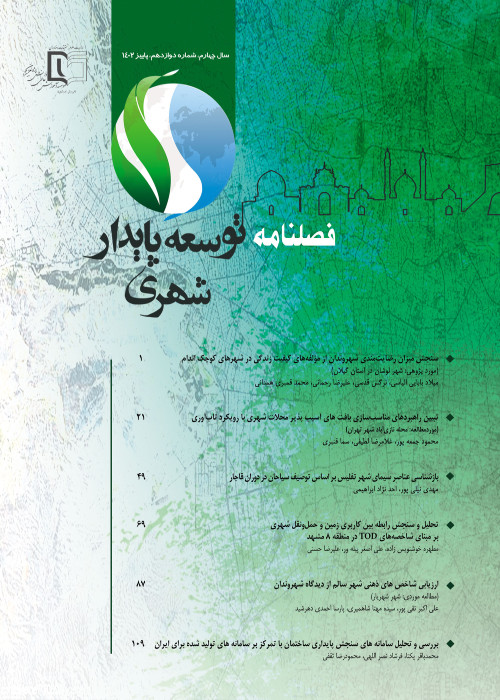Measuring the Urban Health Indicators in Tehran City (Case Study: Tajrish, Bazaar and Esmaeilabad Neighborhoods)
In recent decades, human health and quality of life have been threatened in the world, especially in developing countries, by ever-growing population, cities expansion, expanding the dimensions of destruction and pollution. If we consider "Sustainable development" as a fundamental approach to urban planning, focusing on health at the head of urban development plans implies city movement towards sustainable development. Tehran, the first metropolis in Iran with a population of 8737510, is constantly declining in many aspects of urban health. Its citizens struggle with different dimensions and species of pollution in their city. Therefore, measuring the urban health status in Tehran is necessary. In this research, case studies are from different levels of development in Tehran concerning the specific features of each of these levels. The neighborhoods are "Tajrish" in region 1, "Bazaar" in region 12, and "Esmaeilabad" in region 19. The research tries to provide significant indicators of a healthy city based on the dimensions of the sustainable development approach, status determination of the health indicators, and providing strategies for improving health. This research is a mixed method, and various techniques like field studies, interviews, questionnaires, documentary studies, data and related software helped us to determine each indicator's status according to its specific nature. Considering the population of the studied areas and using the Cochran formula, we completed 283 questionnaires with a Cronbach's alpha of 0.766 in the pre-test phase. We analyzed those by using SPSS and related software. The results of the comparative comparison show that in the field of social viability, economic competitiveness, and environmental sustainability and the sub-clauses in each dimension, the overall trend of the results indicates a relatively direct relevance between the development level and urban health component. Although there is a low general average of urban health indicators in all three neighborhoods, Tajrish has a higher average than other neighborhoods in most cases. It is necessary to take new measures to prevent the spread of health gaps in different parts of Tehran by using new solutions appropriate to the nature of each indicator.
- حق عضویت دریافتی صرف حمایت از نشریات عضو و نگهداری، تکمیل و توسعه مگیران میشود.
- پرداخت حق اشتراک و دانلود مقالات اجازه بازنشر آن در سایر رسانههای چاپی و دیجیتال را به کاربر نمیدهد.



